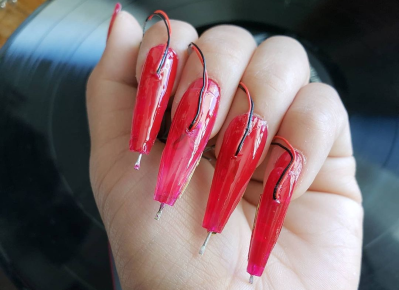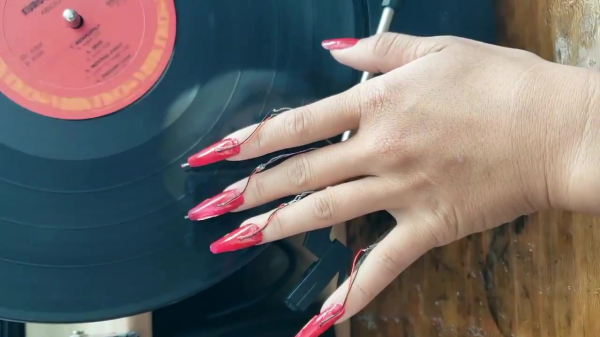[Victoria Shen] modifies glue-on nails to give her the ability to play vinyl records with her fingers. Details are light but from the many glamour pictures, it looks like she pushes record player needles through glue-on nails with thin pickup wire that then presumably goes to an audio jack for amplification.

[Victoria] experiments with novel musical tools for use in her art and performances. Be sure to check out the videos of the nails in action. The combination of “scratching” and ability to alter the speed of vinyl with the free fingers creates a weird and eerie experience.
Using her “Needle Nails”, [Victoria] has found she’s able to play multiple records simultaneously (Nitter). Thanks to the different diameters of 33, 78 and 45 vinyls, she’s able to stack them up while still keeping her fingers on them.
Glove like musical instruments are nothing new but the novel use of fashion, glamour and technology allow [Victoria Shen] the freedom to create something uniquely weird and cool, so much so that Beyonce used it in a video shoot for Vogue (Nitter).
Continue reading “The Sound Of Nails On Black Vinyl Records”












